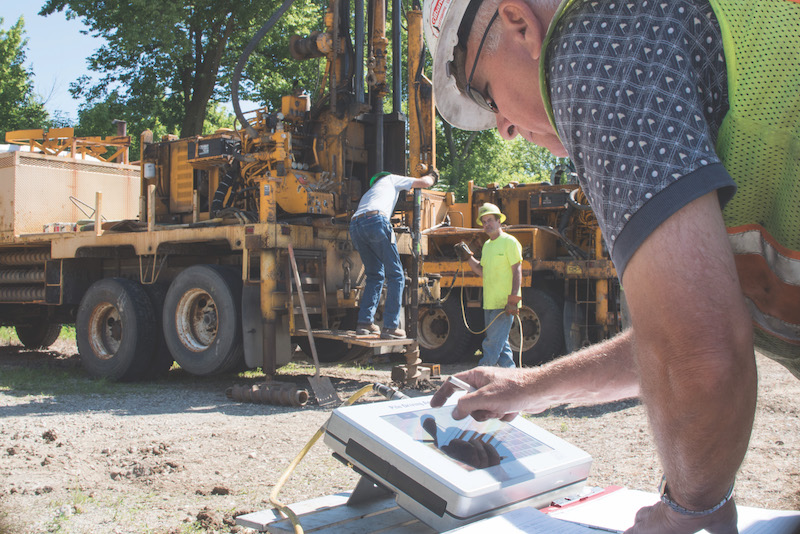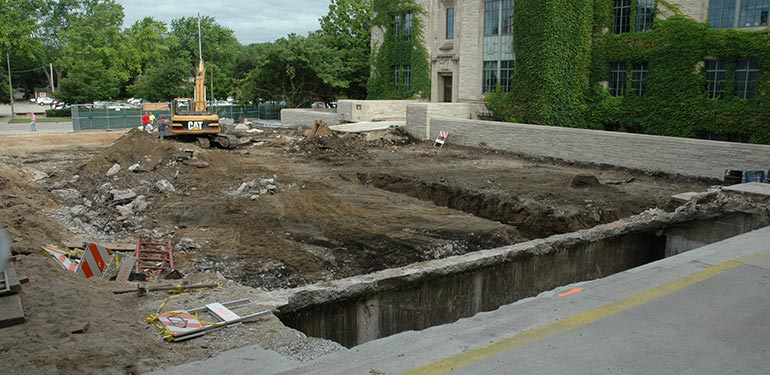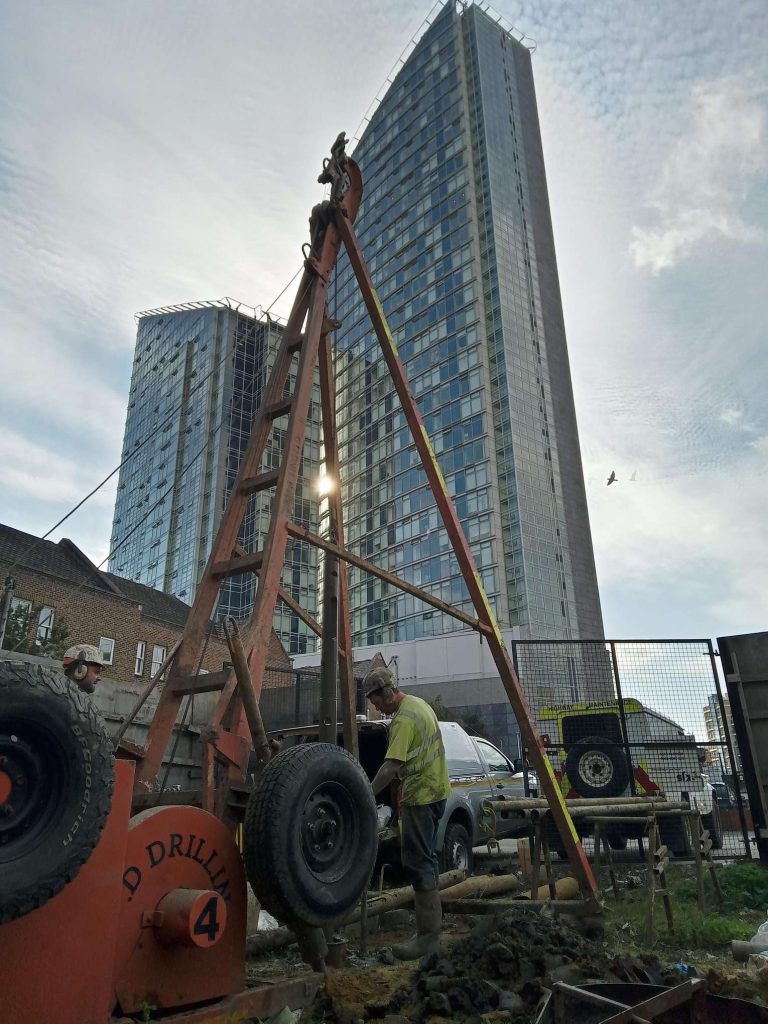The Development of Civil Consulting Engineers in the Modern Age
The Development of Civil Consulting Engineers in the Modern Age
Blog Article
The Vital Payments of Geotechnical Engineers in Analyzing Soil Habits and Structure Layout for Sustainable Infrastructure Advancement
Geotechnical engineers offer as a keystone in the world of lasting framework advancement, where their proficiency in analyzing dirt behavior directly affects the safety and security and durability of structures. By using advanced techniques such as Conventional Penetration Examinations and Cone Penetration Screening, they carefully evaluate dirt buildings, leading to notified decisions on foundation design.
Duty of Geotechnical Designers

Along with site examinations, geotechnical designers examine potential risks such as dirt liquefaction, slope security, and groundwater problems. They use innovative engineering concepts to develop remedies that mitigate these threats, ensuring that layouts abide by pertinent codes and requirements. Their job commonly includes cooperation with other design disciplines, engineers, and environmental researchers to produce incorporated techniques to infrastructure advancement.
In addition, geotechnical engineers add to sustainable techniques by promoting using products and methods that lessen ecological effect. Through their extensive understanding of dirt mechanics and geology, they play a crucial duty in fostering secure, resilient, and lasting facilities that meets the requirements of culture while protecting the atmosphere.
Soil Behavior Evaluation Strategies
Recognizing soil habits is essential to informed decision-making in geotechnical engineering, as it straight influences the design and building procedures. Numerous evaluation techniques are utilized to assess soil homes, making sure exact forecasts of its efficiency under different loading conditions.
One primary method is the Conventional Infiltration Test (SPT), which provides insights into soil density and consistency via the resistance come across during penetration. Cone Infiltration Screening (CPT) supplies a continual account of soil stratification and in-situ strength parameters, making it possible for an extra in-depth understanding of subsurface conditions.
Laboratory tests, such as Atterberg limits, unconfined compressive stamina, and triaxial tests, are necessary for defining soil behavior under regulated problems. These tests help with the determination of crucial parameters, consisting of shear leaks in the structure, compressibility, and strength.

Foundation Style Principles
Foundation layout concepts are critical for guaranteeing the stability and longevity of frameworks, as they determine exactly how lots are sent from the superstructure to the underlying dirt. These principles include different considerations, consisting of load-bearing ability, settlement, and lateral security. A thorough understanding of soil mechanics is essential for geotechnical designers to examine the interaction in between the structure and the soil.
One secret principle is the ideal choice of foundation type, which may consist of shallow foundations, such as spread grounds, or deep foundations, like caissons or heaps, depending upon soil conditions and architectural tons - geotechnical eng. The structure needs to be designed to decrease differential negotiation, which can result in architectural damages

Sustainable Infrastructure Practices
Just how can we efficiently incorporate sustainability right into infrastructure techniques? Sustainable infrastructure techniques start with detailed site assessments, which evaluate dirt behavior, neighborhood environments, and resource schedule.
Furthermore, employing innovative building and construction methods, such as making use of low-impact structures and recycled materials, considerably lowers the carbon footprint of infrastructure jobs. Geotechnical designers play an essential duty in choosing ideal materials that boost longevity and sustainability, such as making use of geo-synthetics to improve soil security and reduce erosion.
Additionally, sustainable facilities techniques need recurring monitoring and upkeep to make certain that structures stay resistant over time. This includes carrying out adaptive monitoring techniques to deal with possible ecological changes. Partnership amongst stakeholders-- consisting of engineers, local neighborhoods, and policymakers-- is critical for incorporating sustainability goals into job preparation and implementation. Ultimately, these methods not just add to the long life of i loved this frameworks but also promote a healthier environment, lining up framework growth with more comprehensive sustainability purposes.
Instance Research Studies and Applications
Study in geotechnical engineering provide valuable insights right into the functional applications of dirt actions and lasting facilities practices. One noteworthy instance is the building and construction of the Burj Khalifa in Dubai, where considerable dirt testing and evaluation were carried out to evaluate the unique obstacles presented by the region's loosened sand and high water table. Geotechnical designers employed progressed methods such as dynamic penetrating and cone penetration testing to establish the soil's load-bearing capacity, inevitably causing the layout of a deep structure system that supports this legendary structure.
Another critical instance is the remediation of the San Francisco-Oakland Bay Bridge after the 1989 Loma Prieta earthquake. Geotechnical analyses disclosed the requirement for soil stablizing methods, consisting of grouting and soil nailing, to enhance the seismic strength of the foundation. These treatments not just enhanced the bridge's safety and security however also added to its longevity and sustainability.
Such study exhibit how geotechnical designers play a crucial duty in comprehending dirt behavior and using cutting-edge services to make certain pop over to this site the architectural integrity and sustainability of facilities projects. geo tech engineering. Their know-how is important in resolving the complex challenges posed by different soil problems across varied geographic areas
Final Thought
Finally, the contributions of geotechnical designers are essential for the assessment of soil habits and the layout of structures, which are vital for lasting framework development. Through the application of sophisticated screening strategies and cutting-edge products, these professionals make sure the security and safety and security of frameworks while minimizing environmental impacts. The combination of lasting methods advertises strength my site in framework projects, highlighting the significance of partnership among stakeholders to accomplish efficient building options that satisfy both social and ecological requirements.
Geotechnical designers offer as a foundation in the realm of sustainable facilities advancement, where their expertise in assessing dirt actions straight affects the security and longevity of structures.Geotechnical designers play an essential role in the design and building and construction of framework by examining soil and rock behavior to ensure stability and safety and security. A thorough understanding of dirt technicians is necessary for geotechnical engineers to evaluate the communication in between the dirt and the foundation.
Geotechnical analyses disclosed the requirement for soil stablizing methods, including grouting and dirt nailing, to enhance the seismic strength of the foundation.In conclusion, the payments of geotechnical designers are essential for the analysis of dirt habits and the style of structures, which are important for lasting facilities development.
Report this page